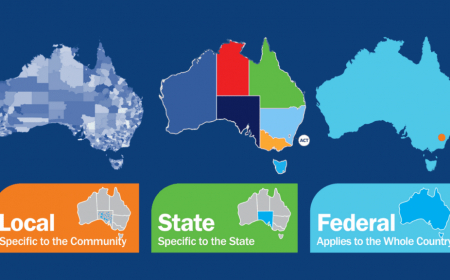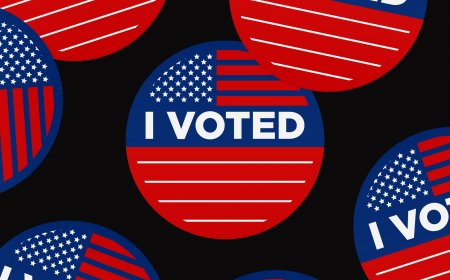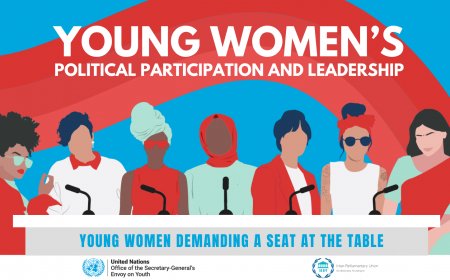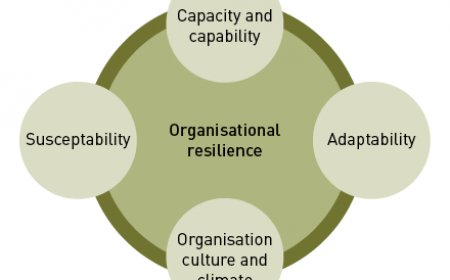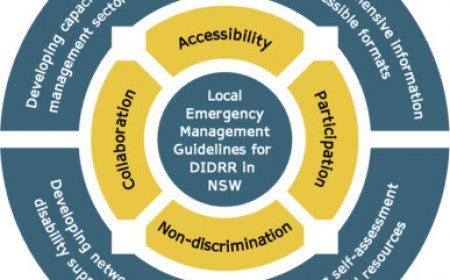Political Pulse: Public Sentiment and Policy Alignment
Discover how public sentiment shapes policy alignment and why bridging the gap between citizens and governments is essential for effective governance. Explore strategies, challenges, and global examples of successful alignment.

In the ever-evolving landscape of governance, understanding the relationship between public sentiment and policy alignment is crucial for effective leadership. The term "political pulse" encapsulates the dynamic interplay between what citizens want and how policymakers respond to those demands. This article delves into the mechanisms that connect public opinion with policy decisions, exploring why alignment—or misalignment—between the two can shape the trajectory of nations.
Understanding Public Sentiment: The Heartbeat of Democracy
Public sentiment refers to the collective mood, preferences, and opinions of a population regarding political, social, and economic issues. It serves as a barometer for gauging societal needs and expectations. In democratic systems, public sentiment is meant to guide policymaking, ensuring that government actions reflect the will of the people.
How Public Sentiment is Measured
To align policies with public sentiment, governments rely on various tools to measure and interpret citizen views:
-
Elections : Voting patterns provide direct insight into public priorities. For example, high voter turnout for candidates advocating climate action signals growing concern about environmental issues.
-
Surveys and Polls : Regular polling helps policymakers track shifts in public opinion. Questions range from broad topics like healthcare and education to specific issues like tax reform or foreign policy.
-
Social Media Analysis : Platforms like Twitter and Facebook offer real-time data on trending topics and public reactions. Hashtags, viral posts, and comment sections reveal grassroots movements and emerging concerns.
-
Protests and Demonstrations : Mass mobilizations, such as the Women’s March or Black Lives Matter protests, highlight urgent demands for change. These events often force policymakers to address overlooked issues.
-
Focus Groups : Small-scale discussions allow researchers to explore nuanced perspectives, providing qualitative insights beyond quantitative metrics.
Challenges in Capturing Public Sentiment
While these methods are valuable, they come with limitations:
- Sampling Bias : Surveys may not represent marginalized groups or rural populations.
- Short-Term Trends : Social media trends can be fleeting, reflecting momentary outrage rather than sustained interest.
- Misinterpretation : Politicians might misread public sentiment, mistaking vocal minorities for majority opinion.
"Public sentiment is the foundation of democracy, but its measurement requires careful interpretation to avoid distortion."
Policy Alignment: Bridging the Gap Between Citizens and Governments
Once public sentiment is understood, the next step is translating it into actionable policies. Policy alignment occurs when government decisions reflect the priorities and values of the populace. However, achieving this alignment is far from straightforward.
Factors Influencing Policy Alignment
Several factors determine whether policies align with public sentiment:
-
Political Will : Leaders must prioritize public demands over personal agendas or party interests. Without commitment, even well-measured sentiment remains unaddressed.
-
Bureaucratic Constraints : Complex administrative processes can delay or dilute policy implementation. For instance, passing legislation often involves navigating multiple committees and stakeholders.
-
Resource Availability : Budgetary constraints limit what governments can achieve. Even if public sentiment favors universal healthcare, fiscal realities may hinder full implementation.
-
Global Pressures : International obligations, trade agreements, and geopolitical considerations sometimes conflict with domestic priorities. Balancing these interests requires skillful diplomacy.
-
Media Influence : Positive or negative coverage can sway policymakers’ attention toward specific issues. For example, widespread reporting on opioid crises has prompted legislative responses in several countries.
Examples of Successful Policy Alignment
When done effectively, aligning policies with public sentiment yields transformative results:
- Canada’s Cannabis Legalization : Responding to shifting attitudes, Canada became one of the first major economies to legalize recreational marijuana in 2018.
- New Zealand’s Gun Control Laws : Following the Christchurch mosque shootings, swift legislative action reflected overwhelming public support for stricter firearm regulations.
- Ireland’s Abortion Reforms : A historic referendum legalized abortion after decades of advocacy, demonstrating responsiveness to evolving societal norms.
Consequences of Misalignment: When Policies Fail the People
When policies diverge significantly from public sentiment, trust in governance erodes. This misalignment manifests in various ways, each carrying significant consequences.
Erosion of Trust
Citizens expect their voices to matter. When ignored, frustration builds, leading to cynicism and disengagement. Low voter turnout and declining membership in political parties often signal dissatisfaction.
Rise of Populism
Persistent misalignment creates opportunities for populist leaders who promise to “listen to the people.” While some deliver meaningful reforms, others exploit grievances for personal gain, undermining democratic institutions.
Social Unrest
Unmet demands can escalate into protests, strikes, or even violence. Historical examples include the Arab Spring uprisings and the French Yellow Vests movement, both driven by perceived disconnects between rulers and ruled.
Case Study: Brexit
The UK’s decision to leave the European Union illustrates the dangers of ignoring public sentiment. Years of Eurosceptic sentiment went largely unaddressed until the 2016 referendum, which revealed deep divisions within British society. The subsequent chaos underscored the risks of delayed responsiveness.
Strategies for Enhancing Policy Alignment
To strengthen the link between public sentiment and policy outcomes, governments must adopt proactive strategies.
1. Strengthen Civic Engagement
Encouraging active participation ensures diverse voices are heard. Town halls, digital consultations, and participatory budgeting empower citizens to contribute directly to decision-making.
2. Invest in Data Analytics
Advanced analytics can identify trends and predict future needs. Machine learning algorithms analyze vast datasets, helping policymakers anticipate challenges before they arise.
3. Foster Transparent Communication
Clear, honest dialogue builds trust. Regular updates on policy progress and rationale reassure citizens that their input matters.
4. Prioritize Long-Term Goals
Short-term fixes risk neglecting systemic issues. Aligning policies with long-term public aspirations—such as sustainability or equality—ensures lasting impact.
5. Balance Competing Interests
Not all sentiments align neatly. Policymakers must weigh conflicting demands carefully, striving for compromises that maximize overall welfare.
The Role of Technology in Shaping Political Pulse
Technology plays an increasingly vital role in connecting public sentiment with policy alignment. Innovations have transformed how governments gather feedback and implement solutions.
Digital Platforms for Participation
Apps and websites enable citizens to vote on local initiatives, report problems, or suggest improvements. Estonia’s e-governance system exemplifies this approach, allowing residents to engage seamlessly with authorities.
Big Data for Predictive Insights
Governments leverage big data to forecast trends and allocate resources efficiently. For example, analyzing traffic patterns informs infrastructure investments, while health records guide pandemic preparedness.
AI-Powered Decision Support
Artificial intelligence assists policymakers by simulating scenarios and evaluating potential impacts. This technology enhances evidence-based decision-making, reducing reliance on intuition alone.
Global Perspectives on Political Pulse
Different regions face unique challenges in aligning policies with public sentiment. Examining global examples highlights best practices and lessons learned.
Scandinavian Success Stories
Nordic countries excel at integrating public sentiment into governance. Denmark’s collaborative model involves unions, businesses, and citizens in crafting policies, fostering consensus and stability.
Challenges in Developing Nations
In many developing nations, weak institutions and limited resources complicate alignment efforts. Corruption and patronage further distort priorities, sidelining genuine public needs.
Authoritarian Regimes vs Democratic Systems
Authoritarian regimes often suppress dissent, prioritizing regime survival over public satisfaction. Democracies, by contrast, incentivize responsiveness, though they too struggle with polarization and misinformation.
Conclusion: Strengthening the Bond Between Citizens and Leaders
The alignment between public sentiment and policy decisions lies at the heart of effective governance. By listening attentively, acting decisively, and leveraging technology wisely, governments can bridge the gap between citizens and leaders. Doing so not only strengthens democracy but also fosters resilience in the face of complex challenges.
FAQs
-
What is public sentiment?
- Public sentiment refers to the collective opinions, moods, and preferences of a population regarding political, social, and economic issues.
-
Why is policy alignment important?
- Policy alignment ensures that government actions reflect the priorities and values of the populace, enhancing legitimacy and trust.
-
How do elections influence public sentiment?
- Elections serve as a direct mechanism for expressing public preferences, guiding policymakers on key issues.
-
What role does social media play in shaping public sentiment?
- Social media amplifies grassroots movements and provides real-time insights into trending topics and public reactions.
-
Can technology improve policy alignment?
- Yes, technologies like AI, big data, and digital platforms enhance feedback collection and decision-making processes.
-
What happens when policies don’t align with public sentiment?
- Misalignment leads to erosion of trust, social unrest, and potentially the rise of populist movements.
-
How can governments better capture public sentiment?
- Through surveys, focus groups, social media analysis, and increased civic engagement opportunities.
-
What are examples of successful policy alignment?
- Examples include Canada’s cannabis legalization, New Zealand’s gun control laws, and Ireland’s abortion reforms.
-
Does globalization affect policy alignment?
- Yes, international pressures sometimes conflict with domestic priorities, complicating alignment efforts.
-
How can citizens ensure their voices are heard?
- By participating in elections, engaging in consultations, joining advocacy groups, and using digital platforms to express opinions.
What's Your Reaction?
 Like
0
Like
0
 Dislike
0
Dislike
0
 Love
0
Love
0
 Funny
0
Funny
0
 Angry
0
Angry
0
 Sad
0
Sad
0
 Wow
0
Wow
0



